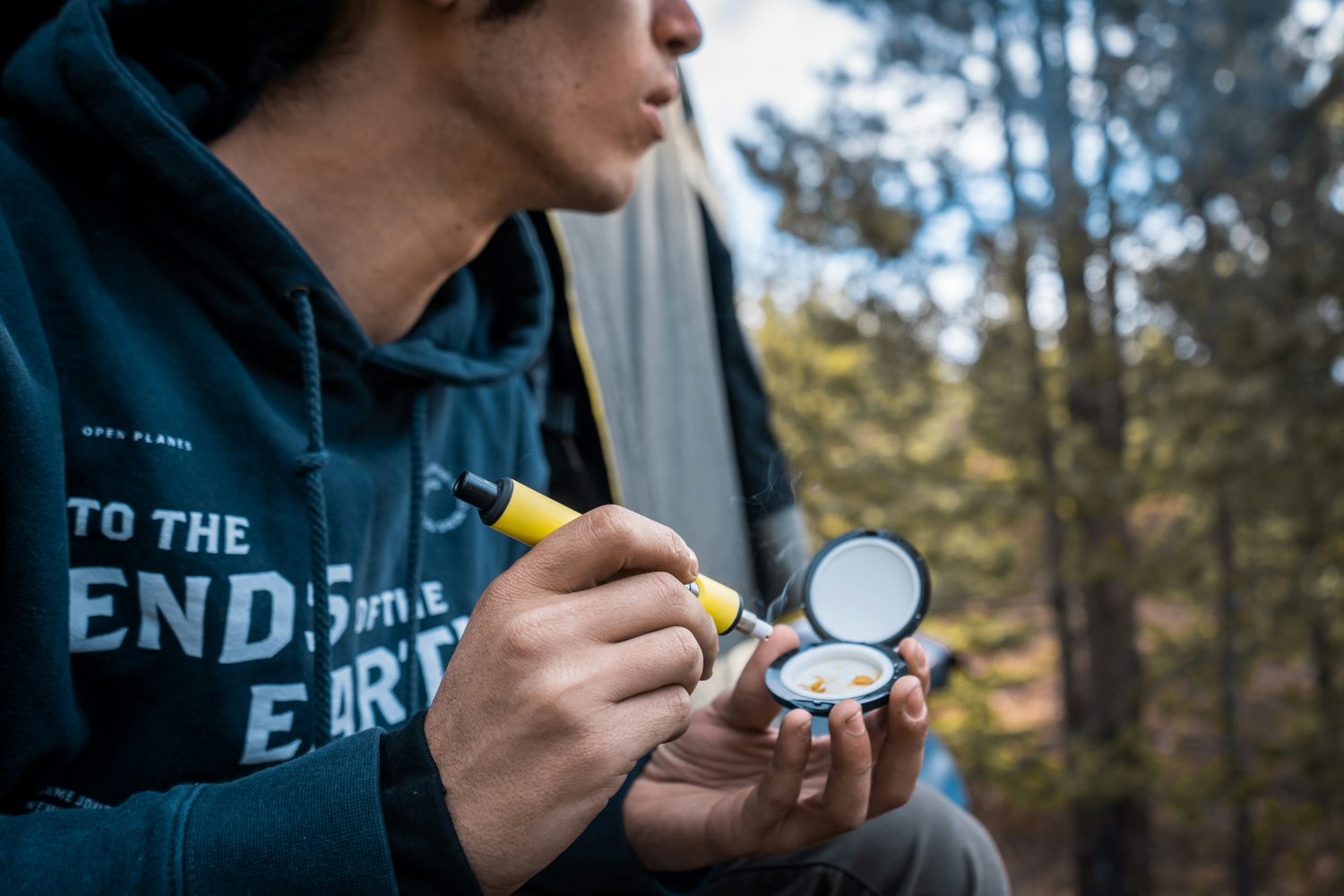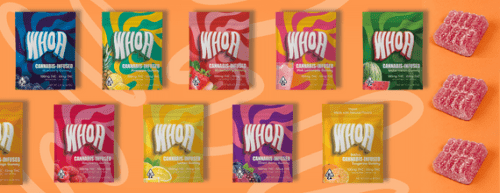Dabbing isn’t just a trend — it’s a culture. Concentrates like hash rosin, live resin, and wax are some of the most premium products in the cannabis industry, but the terminology around them can feel overwhelming. If you’re a new dabber, an experienced concentrate head, or a budtender training for the sales floor, this glossary of cannabis dabbing terms will give you the foundation to communicate and consume like a pro.
Step into a dispensary and you’ll hear words like “terp pearls,” “low-temp dab,” or “full melt hash” tossed around like common knowledge. For consumers just getting into concentrates, and even for budtenders looking to sharpen their skills, understanding dabbing language is critical.
The truth is, concentrates represent some of the highest quality and most expensive cannabis products on the market. That means customers deserve clear explanations, and budtenders need the vocabulary to educate with confidence.
The Basics: What is Dabbing?
Dab
A dab is a small portion of cannabis concentrate placed onto a heated surface and inhaled as vapor. Because concentrates often contain 60–90% THC, a dab is usually more potent than an entire bowl of flower. The term “dab” is also used casually to describe a session, as in “let’s take a dab.”
Dabbing
Dabbing refers to the process of vaporizing cannabis concentrates. Instead of burning plant matter like in a joint or bong, dabbing involves heating a surface (usually a quartz banger) and applying the concentrate for instant vaporization. It’s considered one of the cleanest, most flavorful ways to consume cannabis.
Concentrates
Cannabis concentrates are extracts that isolate cannabinoids and terpenes from the plant. They come in many forms — wax, shatter, rosin, live resin, badder, diamonds, crumble — but all share one thing: potency. Concentrates often deliver effects two to three times stronger than smoking flower, making them popular with experienced users.
Core Gear and Setup
Dab Rig
A dab rig is the foundation of the dabbing experience. Similar to a bong but specifically designed for concentrates, dab rigs use a quartz banger instead of a bowl. The rig cools and filters vapor through water, delivering smoother hits. Many dab rigs are small to medium in size for better flavor retention.
Quartz Banger
A quartz banger is a bucket-shaped nail made from quartz crystal. Quartz holds heat well and delivers clean, terpene-rich flavor, which is why it has become the standard over titanium or ceramic nails. Bangers come in flat-top, beveled, or specialized designs like slurpers, depending on airflow preferences.
Carb Cap
A carb cap is a tool used to cover the banger after dropping in a dab. By restricting airflow, it lowers pressure inside the banger, allowing concentrates to vaporize at lower temperatures. Carb caps are essential for flavor and efficiency, and many are paired with terp pearls for even distribution.
Torch
A butane torch is the classic way to heat a quartz banger. Torches provide the high temperatures needed to get quartz glowing before cooling it to the ideal range for dabs. While effective, torches require practice and care, which is why many beginners turn to e-rigs or e-nails.
E-Rig / E-Nail
Electronic rigs and e-nails eliminate the guesswork of heating with a torch. They provide consistent, programmable temperatures, making them ideal for low-temp dabs or beginners. Brands like Puffco, Carta, and Dr. Dabber dominate this category, and many budtenders recommend them for consumers who want convenience.
Terp Pearls
Terp pearls are small quartz or ceramic balls placed inside the banger. When paired with a carb cap that creates directional airflow, they spin to evenly distribute heat and vaporize concentrates more efficiently. Terp pearls enhance flavor and prevent waste, making them popular with advanced dabbers.
Types of Dabs
Wax
Cannabis wax is a sticky, pliable concentrate with a soft texture, resembling candle wax. Its consistency makes it easy to scoop with a dab tool, and it’s one of the most common forms of concentrate on dispensary shelves. Wax is often made using hydrocarbon extraction and is prized for its potency.
Shatter
Shatter is a translucent, glass-like concentrate that breaks into shards when handled. It’s one of the earliest and most iconic forms of BHO (butane hash oil) concentrates. While less terp-heavy than live resin or rosin, shatter remains popular for its high THC levels and long shelf stability.
Crumble
Crumble is a brittle, honeycomb-like concentrate that easily breaks apart. Its dry texture makes it convenient for adding to joints or bowls, as well as dabbing. Many consumers enjoy crumble for its versatility, though it tends to have slightly less terpene preservation compared to softer extracts.
Badder / Budder
Badder or budder has a whipped, creamy consistency similar to cake frosting. Its smooth texture comes from post-extraction whipping that aerates the concentrate. Budder is highly flavorful, easy to handle, and very popular among dabbers who prioritize taste and aroma.
Live Resin
Live resin is made from fresh-frozen cannabis instead of dried flower. By freezing the plant immediately after harvest, producers preserve terpenes that would normally degrade during curing. The result is a concentrate bursting with flavor, making live resin one of the most terp-rich extracts available.
Rosin
Rosin is a solventless concentrate created by pressing cannabis flower or hash between heated plates. Hash rosin — pressed from bubble hash — is considered top-tier, delivering both potency and full terpene expression. For consumers who want purity without solvents, rosin is the gold standard.
Distillate
Distillate is a refined concentrate with extremely high THC content but little terpene preservation. It’s commonly used in vape cartridges or edibles for its potency and neutral profile. While not ideal for flavor chasers, distillate delivers strong and consistent effects.
Diamond Sauce
Diamond sauce (or THCA diamonds in sauce) combines crystalline THCA structures with terpene-rich liquid extract. The diamonds provide potency, while the sauce delivers intense flavor. This premium concentrate has exploded in popularity for its balance of strength and taste.
Dabbing Techniques
Low-Temp Dab
Low-temp dabs are taken at 450–550°F, maximizing terpene preservation and delivering smooth, flavorful vapor. While lower temps mean lighter clouds, they also reduce throat harshness and make the experience more enjoyable for flavor seekers. Budtenders often recommend low-temp dabs for first-time consumers.
High-Temp Dab
High-temp dabs are taken at 600°F or higher, producing dense vapor clouds and heavy effects. The trade-off is that many terpenes burn off at these temps, leading to harsher hits. Some consumers prefer high-temp dabs for the intensity, but most experts advise moderation.
Cold Start Dab
Cold start dabbing (or reverse dabbing) involves placing the concentrate in the banger first, then slowly heating it. This method gives the consumer more control, reduces waste, and ensures smoother hits. Cold starts are popular with hash rosin and live resin enthusiasts.
Hot Start Dab
The traditional method: heating the banger first until hot, letting it cool for 30–60 seconds, then dropping the dab. Timing is everything with hot starts, and it takes practice to master. While effective, it can be wasteful if done at too high a temp.
Microdosing Dabs
Microdosing means taking very small dabs instead of large hits. With concentrates testing 70% THC or higher, a microdab can be the perfect introduction for new consumers. Budtenders often suggest microdosing to help customers avoid overwhelming highs.
Hash-Focused Terms
Bubble Hash
Bubble hash is made by washing cannabis in ice water and filtering trichomes through micron bags. The resulting resin is dried and collected. Depending on quality, bubble hash can range from “cooking grade” to “full melt,” with the latter dabbing cleanly.
Full Melt Hash
Full melt hash refers to bubble hash that vaporizes completely without leaving residue. It’s considered some of the finest hash available and is highly prized among concentrate connoisseurs. Only high-grade trichome heads achieve this melt quality.
Temple Ball
A temple ball is a traditional hand-rolled ball of hash, often originating from Nepal or India. While not always dab-friendly, many temple balls are pressed from high-quality resin and can be dabbed if properly prepared. They represent cannabis culture’s long global history.
Solventless Hash Rosin
Hash rosin is pressed from bubble hash using heat and pressure, creating one of the purest forms of concentrate. Solventless rosin has become the benchmark for connoisseur-level dabbing, combining potency, purity, and unmatched terp flavor.
Mechanical Separation
Mechanical separation is an advanced solventless technique where pressure and heat are used to isolate THCA from rosin or hash. The separated THCA can be turned into diamonds, while the terp sauce can be recombined for premium extracts.
Flavor, Terpenes, and Effects
Terpenes
Terpenes are aromatic compounds found in cannabis that give strains their unique smell and taste. Beyond aroma, they influence effects — from relaxing myrcene to uplifting limonene. Terpene preservation is one of the main reasons dabbing is so valued.
Terp Profile
A terp profile refers to the unique combination of terpenes in a strain. When dabbed, the terp profile becomes fully expressed, delivering nuanced flavors that can’t be experienced in flower alone. Budtenders often highlight terp profiles when selling premium concentrates.
Entourage Effect
The entourage effect describes how cannabinoids and terpenes work together synergistically to shape the experience. A dab with both THC and a robust terp profile feels different than pure THC distillate. Consumers who want a well-rounded high should seek out full-spectrum concentrates.
Cough Lock
Cough lock is slang for the intense coughing fit that can follow a large dab. It’s often caused by high temps, terp irritation, or sheer potency. While uncomfortable, many consumers see it as a sign of strength — though budtenders should warn newcomers.
Advanced Accessories
Reclaim Catcher
A reclaim catcher attaches between the rig and the banger to collect unused concentrate that condenses after a dab. Some consumers reheat reclaim, though it’s less flavorful and more degraded. More commonly, reclaim catchers are valued for keeping rigs clean.
ISO Dunk / ISO Bath
An ISO dunk is a cleaning method where the hot banger is dunked into a jar of isopropyl alcohol (ISO) to remove residue. Many enthusiasts swear by ISO baths for keeping quartz spotless and extending its lifespan. Clean quartz is essential for flavor.
Slurper Banger
The terp slurper is a banger style with a dish and airflow channels designed to “slurp” concentrate upward for maximum vaporization. Often paired with terp pearls, slurpers provide thick clouds and improved efficiency, making them a favorite among advanced dabbers.
Recycler Rig
Recycler rigs continuously cycle water through chambers, providing smoother, cooler hits. Their design minimizes splashback and maximizes flavor. While more expensive, recycler rigs are popular with serious dabbers who want top-tier function.
Cap + Pearl Combo
Using a carb cap and terp pearls together allows airflow to spin the pearls, evenly vaporizing the dab. This combo has become a must-have for flavor chasers and efficiency-focused consumers. Many budtenders upsell terp pearls alongside carb caps for this reason.
Why These Terms Matter for Budtenders and Consumers
For budtenders, knowing dabbing terminology builds credibility. Customers shopping for concentrates often want guidance on rigs, rosin vs. resin, or how to cold start. A budtender who can explain terp pearls, slurper bangers, or microdosing instantly becomes a trusted resource.
For consumers, understanding these terms leads to better experiences and smarter purchases. Knowing the difference between live resin and rosin, or between low-temp and high-temp dabs, can save money and unlock more enjoyable highs. Dabbing isn’t just about potency — it’s about technique, flavor, and respect for the craft.
FAQ: Cannabis Dabbing Terms
What is the difference between a dab rig and a bong?
A dab rig is specifically designed for concentrates, with a quartz banger for vaporization. A bong uses a bowl for flower combustion. While they look similar, their functions are very different.
Can you dab flower?
Not effectively. Dabbing requires concentrates that vaporize cleanly. Flower combusts rather than vaporizes, so it’s not suitable for rigs.
What’s the best temperature for dabbing?
450–550°F for flavor and terpene preservation, 600–700°F for bigger clouds and stronger hits. Most experts recommend starting lower.
Why do people prefer hash rosin dabs?
Hash rosin is solventless, clean, and terpene-rich. It’s considered the pinnacle of dabbing concentrates for flavor and purity.
What’s the difference between wax and live resin?
Wax describes a texture, while live resin describes a process (fresh frozen extraction). Live resin generally offers stronger terpene expression than wax.
What are terp pearls and why are they important?
Terp pearls help distribute heat and vaporize concentrates evenly. They improve efficiency and maximize terpene expression during dabs.
Is a cold start dab better than a hot start?
Cold starts are smoother and preserve more terpenes. Hot starts are faster but risk burning concentrates if the nail is too hot.
What is reclaim and should I smoke it?
Reclaim is leftover concentrate that collects in your rig. It can be reused, but it’s less flavorful and harsher than fresh dabs. Most people avoid it.
Do all concentrates dab cleanly?
No. Only certain types like full melt hash, rosin, live resin, and refined BHO are ideal. Lower-grade hash or poorly purged extracts may leave residue.
What’s the difference between solventless and solvent-based concentrates?
Solventless (rosin, bubble hash) uses only heat and pressure. Solvent-based (shatter, wax, live resin) relies on hydrocarbons like butane. Both can produce quality, but solventless is prized for purity.
Dabbing isn’t just about dropping concentrate into a hot banger — it’s a culture built on language, technique, and respect for the plant. The words we use to describe dabs, rigs, hash rosin, terp pearls, and temperatures aren’t just jargon, they’re the shared vocabulary that connects budtenders and consumers to the artistry behind concentrates.
For budtenders, knowing these terms transforms a simple transaction into an educational experience.
For consumers, it means unlocking the full potential of concentrates while avoiding wasted product or overwhelming highs.
As the cannabis industry grows, concentrates will only get more sophisticated, and the terminology will continue to evolve. Staying fluent in the language of dabbing ensures that both the sales floor and the sesh table remain places of knowledge, culture, and connection. If you’re a consumer learning to take your first cold start dab or a budtender guiding someone toward their first jar of hash rosin, this glossary is your toolkit.
The more you know, the better cannabis can be for your life.







